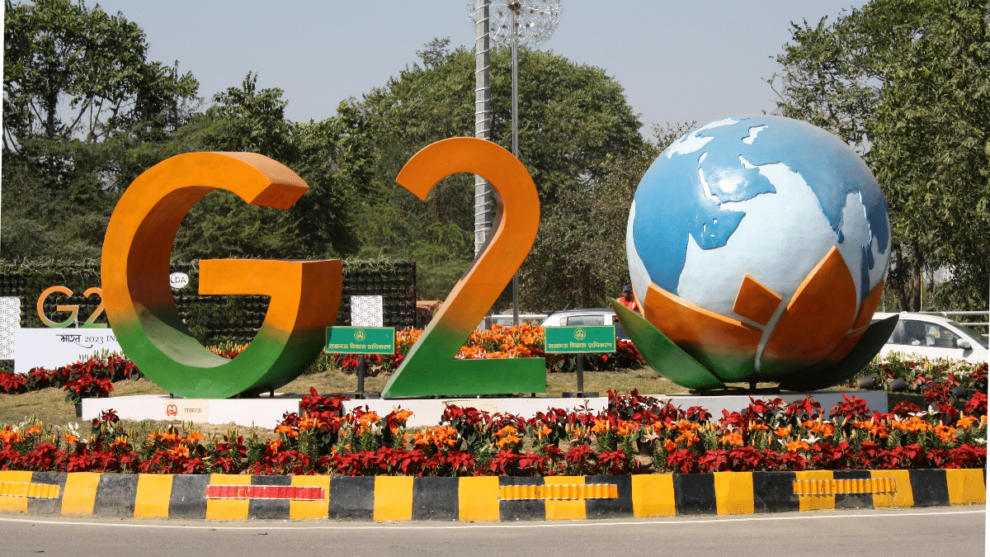Earlier this month, India hosted the G20 presidency, burnishing its credentials as a leader on the world stage. India’s growing geopolitical importance is clear, as both the United States and European Union have forged various initiatives to deepen cooperation with the country. However, despite the growing importance of the Indo-Pacific region, the transatlantic partners did not mention the Indo-Pacific partners in the latest EU-US Trade and Technology Council (TTC) joint statement. This is a notable oversight, as the global nature of supply chains and the technology ecosystem necessitates coordination between the Indo-Pacific and transatlantic partners. To foster deeper coordination, the transatlantic partners should approach New Delhi to serve as a bridge to the Indo-Pacific.
Currently, the transatlantic approach to the Indo-Pacific has been piecemeal, with the US and the EU establishing their own bilateral partnerships and small coalitions in the region. One reason the EU-US TTC has opted not to cooperate with countries in the Indo-Pacific stems from the debate between the US and Europe over China policy. Despite these differences, cooperation is possible and formal coordination between Indo-Pacific countries and the EU-US TTC would be a force multiplier for an affirmative agenda on technology globally.
There are a few reasons that India could serve as the gateway to the Indo-Pacific for the transatlantic partners. For one, the US and the EU have strong diplomatic ties with India on trade and technology issues. Already, the EU launched its second bilateral Trade and Technology Council, with India. Similarly, the United States cooperates with India through the Quadrilateral Security Dialogue (or Quad) – with Japan and Australia – and the recently announced US-India initiative on Critical and Emerging Technology (iCET). Strong trading relationships with India also provide a foundation for cooperation. The EU is India’s second largest trading partner, and India is the 9th largest goods trading partner with the US.
Despite the promises of cooperation between the transatlantic partners and India, there remain a few challenges that could hobble deep and sustained cooperation. India is still attempting to chart a third way between the United States and Russia. Historically, India has been the world’s largest buyer of arms from Moscow, but the war it started in Ukraine could challenge Russia’s defense industrial base and ability to provide equipment to India. Additionally, India’s democracy has eroded during Prime Minister Narendra Modi’s tenure, as attack on minorities and harassment of opposition parties increases. Likewise, India has a rocky track record on digital rights and internet freedom. In 2022, India had the highest number of internet shutdowns worldwide, with 84 disruptions. The EU and the US should be able to balance low-hanging fruit and impactful deliverables in their relationship with India. There are a few areas where the US, EU, and India could operationalize this technology triangle.
For one, semiconductor supply chain resiliency should top the agenda. Semiconductor manufacturing is a priority area for India – largely evidenced by the recently launched “India Semiconductor Mission.” Already, the US and European companies have a presence in India for chip design. However, packaging – or the process of placing chips in protective casing – is one area where India can bolster its market presence and help diversify the semiconductor value chain. The US and Europe have a vested interest in growing India’s packaging presence, as there is strong geographic concentration of packaging in China. Recently, US company Micron Technology committed $1 billion to establish a chip packaging facility in India. This recent development highlights a case study for how the US and Europe can work with India to further bolster its packaging presence and diversify the value chain.
Another important opportunity is quantum information science and technology (QIST). Prime Minister Modi recently highlighted India’s aim to stay at the forefront of the quantum frontier and to do so alongside partners. Both TTCs include QIST initiatives, including the EU-U.S. TTC’s expert task force and the EU-India TTC’s strategic technologies, digital governance and digital connectivity working group. The two TTCs should establish a coordination mechanism to identify areas for US-EU-India research collaboration, including engagement on norms and standards development.
One opportunity is through the Quad’s recently established International Standards Cooperation Network (ISCN). The US Department of Commerce should extend the network to European countries (as they did for Canada) or link the ISCN with the transatlantic Strategic Standards Information (SSI) mechanism. The EU’s experience managing and linking quantum projects across Member States – including the European High Performance Computing Joint Undertaking (EuroHPC JU) and the European Quantum Communication Infrastructure (EuroQCI) Initiative – could serve as a case study for forging cross-border trust, engendering collaboration, and developing high-technology R&D platforms between the United States, Europe, and India. Another way of deepening collaboration is by establishing quantum talent exchange programs between the US, the EU and India.
Third, cooperation on digital infrastructure, especially next-generation wireless networks such as 6G, remains paramount. Prime Minister Modi announced India’s goal to establish itself as a world leader in 6G and to roll out 6G services before 2030. Aligning 6G risk assessments early will be critical to move forward with any shared strategy. The US, EU, and India should focus on jointly developing 6G standards and multilateralizing them at the International Telecommunication Union (ITU) and other bodies.
Another area for cooperation is coordinating telecommunications security assistance to developing countries. There are several initiatives underway providing assistance to developing countries, including the two TTCs, the Partnership for Global Infrastructure and Investment (PGII), Global Gateway, and the Quad’s Infrastructure Coordination Group. To ensure effective investments and avoid duplication, the US, Europe, and India should align and coordinate their approaches.
Source: TPP















